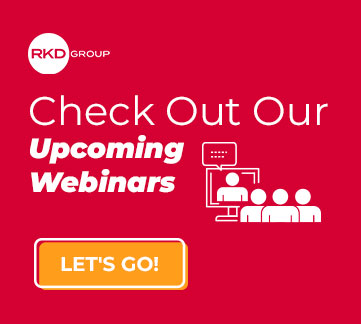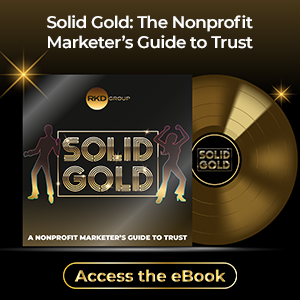As thought leader and author Tom Davenport once said, “Every company has data in its future, and every company will eventually be in the data business.”
Well, what was once the future is now our reality. Between data-led business models, growing privacy concerns, ransomware attacks and the impact of poor data management, it’s safe to say that nonprofits are planted firmly in the data business.
Data has become our number one asset, and organizations who are investing in a data-driven future are experiencing stability and sustainable growth in return.
But achieving data success requires more than just wishful thinking.
Like any other organizational change, embracing data requires a series of carefully laid pieces to support the foundation for long-term success. Without them, the foundation will crumble.
In this blog post, we’ll define what data success looks like for nonprofits and the building blocks required to build a stable foundation that supports it.
Defining data success
Data success can be a pretty broad term. In this case, it means having trusted data available when you need it.
This is what many companies and providers would classify as real-time data. However, we prefer to call this right-time data.
What’s the difference?
Although having real-time data at your fingertips sounds shiny and exciting, the reality is that it involves a constant stream of information and continuous monitoring. Real-time data doesn’t always provide the insights needed to make strategic decisions.
This is where right-time data comes into play. This means having data that you trust available to you when it’s needed to support strategic decisions – like customized ask arrays, personalization, and more.
But in order to have trusted data at your service, you must lay the proper building blocks in place to support it. Working in synchrony, these building blocks form the pyramid to data success.
The pyramid of building blocks

1. Team
Every major organizational shift requires buy-in from the top. Without it, the rest of your organization will have a hard time staying motivated.
Members of your executive team should serve as sponsors in this shift, prioritizing the culture and orientation needed to drive data success. This group should be made up of people with a passion for data quality and use, who aren’t afraid of the dirty work it takes to clean up data processes along the way.
2. Culture
What’s the current culture around data in your organization?
Any major change usually requires a much larger cultural shift. A data-centric culture shift should include:
- Democratizing access
- Understanding the context around terms and processes
- Building up data literacy among members
- Making data the core part of all decision-making
3. Road Map
Develop a road map that outlines what your data-driven future will look like and how you plan to get there. Milestones should include exploration, transformation and the steps required to develop a data-driven culture and environment.
4. Data Literacy
Data literacy is the ability to read, write and communicate data in context. This includes an understanding of data sources and constructs, analytical methods and techniques applied, and the ability to describe the use case, the application and the resulting value.
Having data-literate team members is an essential piece to any successful data-driven culture. This knowledge will empower them to make decisions backed by analytical insights, ultimately driving overall success.
5. Tools and Processes
As you would probably imagine, this involves all the platforms, tools and processes needed to help you achieve data success. This includes data integration, data matching, data hygiene, access, reporting, analytics and business intelligence.
6. Prioritization
Like any major project, you must understand what is important to overall success and prioritize those pieces first. Don’t try to do it all at once. Even small steps down the path to change will add up to giant leaps in the long run.
Continue to evaluate as you go along and adjust your priorities when needed.
7. Strategic Direction
Outline the strategic direction for this organizational shift with distinctive goals and outcomes. Define the uses, availability and access for your data.
8. Measurement
Any initiative without goals is difficult to accomplish. Make sure you’ve carefully outlined the goals you are hoping to achieve during this process. Measure your progress continually and review and update any goals as needed.
9. Data Governance
Who within your organization will have the authority and control over data assets? How will those assets be used? This includes everything from your team to the platforms used to manage your data.
Data governance outlines all business rules surrounding your data and determines when and how it will or can be used.
Finalize the plan

1. What tools/infrastructure do you have in place now for data? Consider the following: data governance, data science, data visualization (dashboard and reporting), and any others.
2. What is your organizational data process currently? Do you have one? What needs to change?
3. What is the culture around data in your organization like? Would it support change and evolution? Should it?
4. What two changes would make the most impact? Select one that is short term (e.g., tools/processes) and one that is long term (e.g., education).
This may seem like an extensive list, but don’t get overwhelmed. As we mentioned above, prioritize each component by level of importance. Even small steps on the path to data success are better than no steps at all.
Once these building blocks are implemented, you will be on the road to making strong, data-driven decisions that will provide a path of sustainable growth for your nonprofit organization.





Leave a comment: